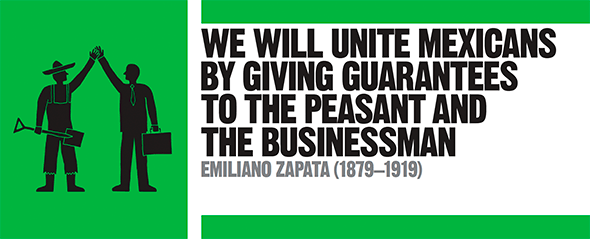
IN CONTEXT
Anarchy
Land reform
1876 Porfirio Díaz takes power in Mexico, reinforcing inequalities in social status and land ownership.
1878 In Russia, a revolutionary party adopts the name “Land and Liberty”—the same slogan will be used by the Zapatistas in the 1990s.
1920 A degree of land reform is granted in the south of Mexico as the revolution comes to an end.
1994 The Zapatista Army of National Liberation begins an armed uprising in the southern state of Chiapas, in protest against the Mexican government’s mistreatment of indigenous people.
The struggle for land and social rights lay at the core of the Mexican Revolution between 1910 and 1920. A peasant by birth, Emiliano Zapata was a key figure in the revolutionary movement, leading forces in the south. He aimed to resolve the conflict through a mixture of rights, guarantees, and armed struggle.
Zapata’s ideas chimed with much of the Mexican anarchist tradition and its core principle of communal land ownership, which was based on indigenous traditions. To ensure Mexico’s political and economic development, Zapata wanted to break the monopoly of the hacendados, or plantation owners, and unite the country—peasants and businessmen alike—behind an agenda of government reform. Harnessing the nation’s resources of labor and production would also secure its independence on the international stage.
Zapata’s vision was crystallized in his 1911 Plan of Ayala. This blueprint for reform demanded free elections, an end to the dominance of the hacendados, and the transfer of property rights to towns and individual citizens.
Like most of the leaders in the revolution, Zapata was killed before the end of the conflict. Although land reform was enacted in the 1920s, huge inequalities persisted. Yet Zapata’s ideas left an enduring legacy in Mexico, and inspired the recent Zapatista movement among indigenous peasants in Chiapas, which has created a quasi-autonomous state in the south.

The troops who fought for Zapata in the Mexican Revolution were mostly indigenous peasants, and included all-female divisions.
See also: Pierre-Joseph Proudhon • Peter Kropotkin • Antonio Gramsci • José Carlos Mariátegui
